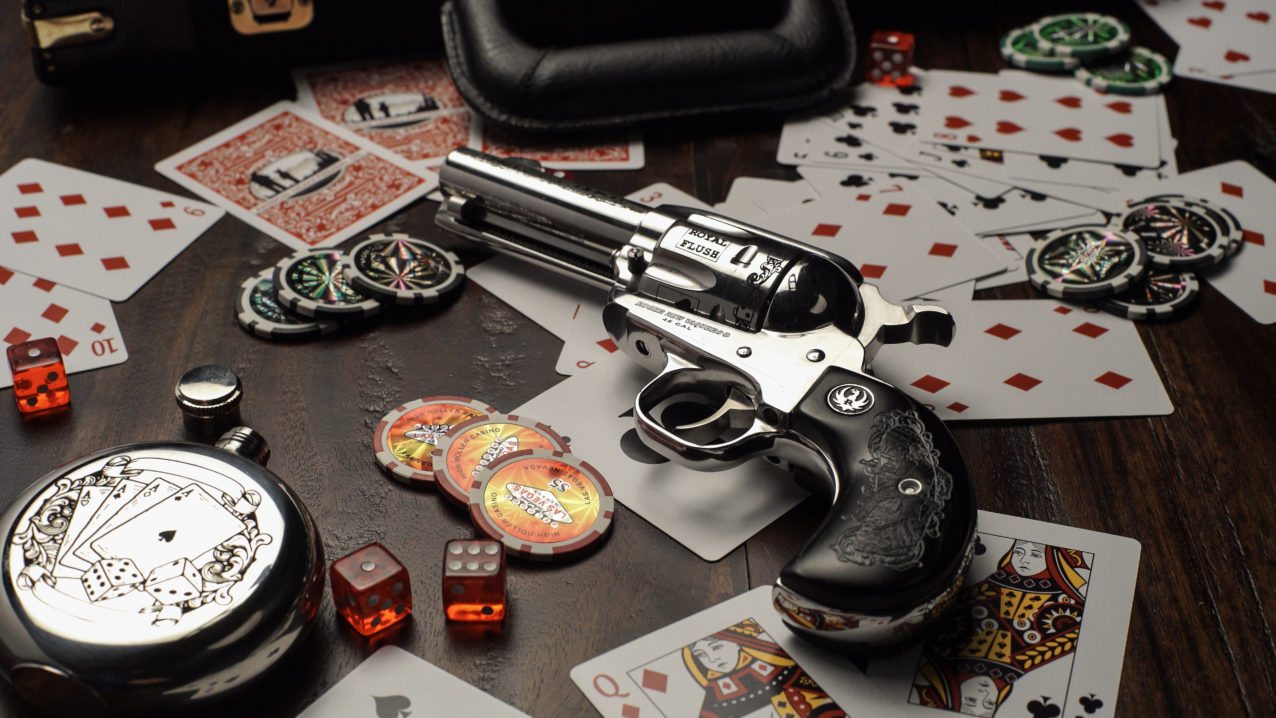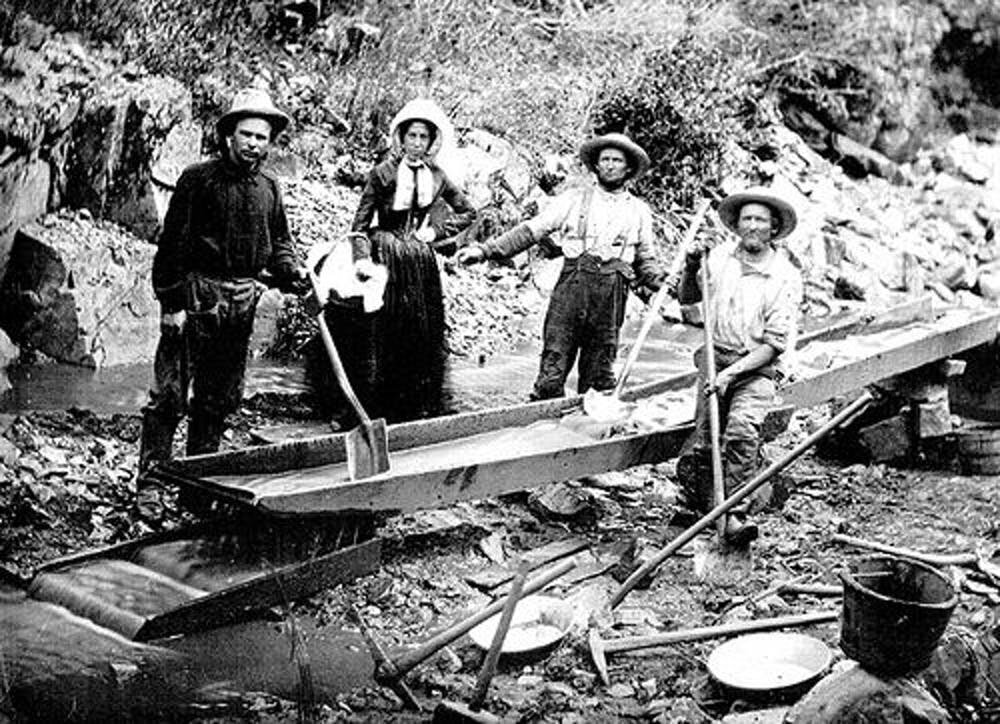Gambling and the Wild West: Introduction
The Wild West, known as the wild and lawless, is the subject of today's blog post. In particular, we will focus on different decades of the 19th century, with an emphasis on gambling. During this period, some high-profile names associated with gambling emerged. Also, most gambling evolved from a room where people gathered to gamble, to the well-known gaming parlors that gave rise to some of the most popular online gambling games. Read on to learn more about the history of gambling in the Wild West.

1800-1848: The early days
At the beginning of the new century, according to HistoryNet, the country was divided as follows: small towns were springing up, and with them, popular gentlemen's saloons that offered everything a man of the time needed: women, whiskey and gambling. It became a popular pastime and, for some, even a professional calling. As new towns were founded, more gambling establishments opened. Gambling was widespread during this period. Some of the most popular games of this period were blackjack, poker and faro. A famous name associated with this period is the Italian immigrant Charles Cora, who was the most famous faro player in the entire Mississippi area. He was banned from playing at several venues after he broke several banks with his winnings.
1849-1860: California gold rush
A few decades later gold was discovered in California, leading to a gold rush. This attracted many players from Mississippi to San Francisco. It was several years later when the downtown area of Portsmouth Square was surrounded by large gambling houses. Reports suggest that "the door never closed and huge sums of money were revolving".
Here are a few examples of properties that emerged during this period. First, there was the Parker building. It was first planned as a hotel, but was turned into a casino as more and more players flocked to San Francisco. This casino establishment consisted of one room with three tables for faro, two for monte, one for roulette and another table for other games. Players who wanted to use the house had to pay about $10,000 a month per room. Smaller rooms paid $3,500 a month. It is also said that some people rented the entire first floor for $60,000 and renovated the rooms to make them suitable for gambling. Estimates are that they have changed. Raised over half a million dollars at Parker House every day during the height of the California gold rush.
However, Parker House was not the only gambling establishment in San Francisco. He was surrounded by many other people of French descent. It is believed that gambling came to the United States from France because of its popularity, and many gambling establishments operated under French influence thereafter. Some examples of gambling establishments near Parker House include Aguila de Oro, Varsuvien, Mazurca, La Susiedad and Rendezvous.
As a result of the mining camps again, players went. Cities such as Sacramento, Nevada City and other Sierra towns were full of miners who liked to gamble and wanted a share of the winnings. A famous couple during this period were Cora and Bryant. Cora, though a gambler, was hanged for the murder of a US marshal in May 1856. Bryant, on the other hand, was much more successful. He founded the House of Bryant and 'soon became one of the richest and most influential men in San Francisco'. He eventually moved south and made more money, but he too suffered a terrible fate and was shot dead in 1868.

The 1860s: mining continues
In the 1860s, the mining euphoria in Nevada made Virginia City a major center of gambling. Like San Francisco, 'gambling houses dominated the main streets of the new cities'. A survey showed that the city had 18,000 residents and there was one gambling establishment for every 150 of them, meaning there were a lot of gambling establishments. And which ones were the most popular during this time? First of all, there was the Gentry and Crittenden gambling parlor. Its main attraction was the No Limit Faro table. In addition to these gambling houses were Tom Peasley's Sazarac, Delta Saloon and Sawdust Corner. A few of the key players who were successful at these tables at that time were James Brown, Matt Redding, Jesse Bright, Gus Botto, Billy Dormer and Tom Diamond, as well as Miles Goodman, Joe Dixon, Ramon Montenegro, Grant Isrial and Joe. Other popular towns during this period were Gold Hill and Carson City.
Another important development apart from the gold rush was the building of the transcontinental railway. Many small towns sprang up, full of professional players and played just for fun. Subsequently, as new towns were established, these segments of society packed their bags and moved to the next town to try their luck.
The 1870s: cattle hauling and the cattle trade
With the beginning of a major cattle shipment from Texas to Kansas in the 1870s, "cattle towns" were established. These towns included Abilene, Newton, Wichita, Ellsworth and Dodge City. Each became a center for gambling in its early days. There were many professional gamblers associated with the area and time, a prime example being "Wild Bill" Hickock. With new ore discoveries and the creation of additional mining areas, new towns quickly sprang up. Such towns were Deadwood (Dakota), Leadville (Colorado) and Tombstone (Southern Arizona).
Deadwood became famous because it was there that Wild Bill Hickok was shot, holding the Dead Man's Hand - aces and eights - and became a legend to this day. There were also over 150 resorts in Leadville, ranging from small saloons to luxury theatres and concert halls. A popular attraction in this town was the Tom Kemp Dance and Playhouse. Finally Tombstone 'developed almost overnight to become a great city in the Arizona desert and attracted many distinguished professional players'.
The 1880s and 1890s: gambling flourished
In the 1880s, the big cities of the West grew up. This brought with it the growth of 'gambling centers'. Back in San Francisco, which was a popular hotspot during the Gold Rush, the Berberi Coast became a renowned institution, regarded as a 'world-famous center of sin'. Other cities known for gambling during this period were Denver, Kansas City, Omaha, Tucson, Hot Springs, Ark and the Texas cities of Austin, San Antonio, Fort Worth and Dallas. Around this time, a group of gamblers emerged, which was essentially a group of gamblers traveling the country in search of wealth.
In the following century, gold was discovered in the Klondike region of the Canadian Yukon, leading to another gold rush. As in previous decades, the miners were followed by numerous adventurers in search of fortune. This led to the emergence of saloons, brothels and gambling houses. A popular establishment during this period was the Dexter Saloon, run by Wyatt Earp and Charlie Hoxie. Although we can't visit the place today, we can easily immerse ourselves in its atmosphere: you just have to visit the best online casinos at https://topcasinoer.net/.
The end of gambling in the Wild West
At the turn of the century, there were still a few towns that offered gambling. These were "the prosperous mining camps of Nevada, particularly Goldfield, Rawhide and Tonopah." With the emergence of the anti-saloon and women's suffrage reform movements that "swept the nation in the first decades of the 20th century", saloons and gambling towns faded into obscurity. This was partly due to the passage of laws banning the manufacture and sale of alcoholic beverages. In addition, many states passed laws banning casino gambling. Nevada was the only state that did not ban this form of entertainment, and so the trend continued there for many decades.
Read Also: Online casino games are becoming increasingly popular
